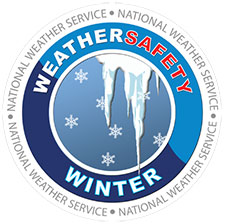
HYPOTHERMIA
- Core body temperature drops too low
- Symptoms: Exhaustion confusion, slurred speech, drowsiness
FROSTBITE
- Skin loses blood circulation and freezes
- Symptoms: White or grayish yellow skin area, skin that feels unusually firm or waxy, numbness
DRESS APPROPRIATELY
- Layer up: wear multiple layers to maintain body heat.
- Waterproof outer layer: protect against elements.
- Warm accessories: keep extremities warm.
- Footwear: wear insulated, treaded boots.
SAFE WORK PRACTICES
- Pace yourself: take breaks in a warm area; stay hydrated.
- Clear pathways: ensure surfaces are ice and snow-free.
- Use handrails: prevent falls on stairs and ramps.
- Lifting techniques: cold can tighten muscles; limber up!
EQUIPMENT AND VEHICLE SAFETY
- Inspect equipment: ensure good working condition.
- Winterize tools: use low-temperature lubricants and fluids.
- Vehicle preparedness: winterize vehicles; de-icing materials and emergency kits.
- Drive cautiously: go slower; maintain a greater distance.
OCCUPATIONAL AWARENESS
- Identify hazards: assess for ice, snow, and poor visibility.
- Heater safety: use cautiously, keep vented, away from flammables.
- Communication devices: keep fully charged for emergencies.
- Buddy system: use in remote or hazardous outdoor conditions.
- Fatigue awareness: adjust schedules for more breaks; warming periods.
EMERGENCY PREPAREDNESS
- Emergency kits: include blankets, food, water, first aid, flashlights, and a shovel.
- Communicate: inform someone of your whereabouts and return time.
- First aid: ensure everyone knows basic first aid.
- Evacuation plans: review and ensure clear, accessible routes.
5 THINGS TO KNOW ABOUT WINTER WEATHER FORECASTS
- Snow or ice totals can vary greatly over short distances
A heavy snow band may form, dropping more snow in one location while significantly less snow falls just a few miles away. - Winter forecasts can change frequently
Forecasts may change as new model data becomes available. Always check weather.gov for the latest information. - Focus more on the winter storm’s impacts
Don’t focus too much on exact numbers and consider the full range of possibilities - Know your winter weather terminology
If a Watch is issued, get prepared for hazardous weather, If a Warning or Advisory is issued, take action – hazardous weather is occurring or will occur soon. - Rely on a dependable source for weather info
Choose your information sources wisely, and follow a name or organization you know and trust.
For more information on winter weather safety, visit weather.gov/winter.
